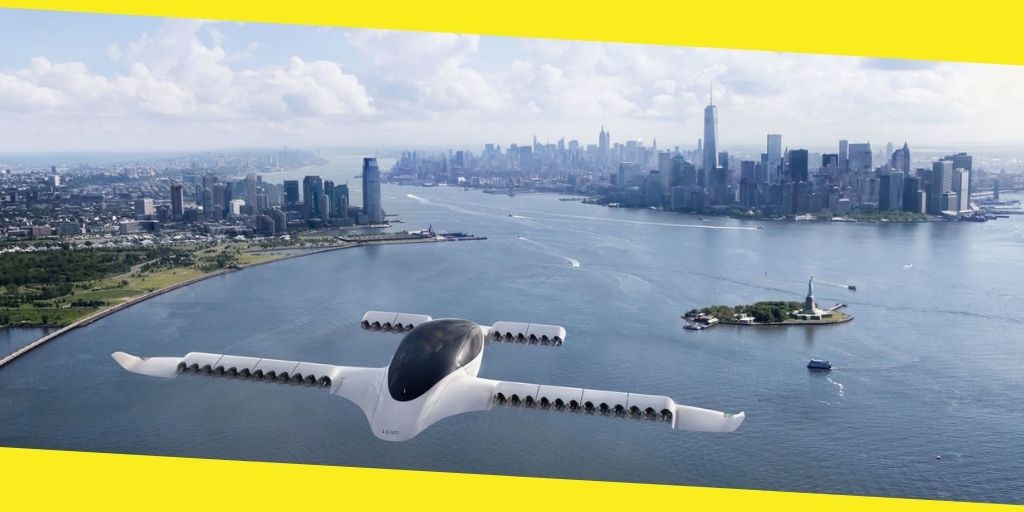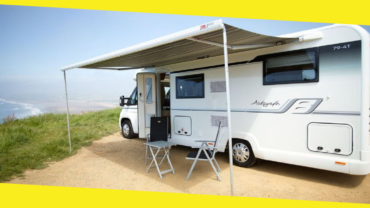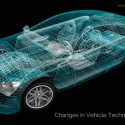When Can We Expect Electrical Air Taxis Become Accessible?

You can see the sci-fi theme in many products: there are countless movies, TV shows, books and games dedicated to technologies that are expected to happen in the near future. You can even find hundreds of slot machines based on a science fiction theme at casino online Canada sites. While most of these visions are just dreams for now, some may be closer to reality than you think. Electric air taxis are one of them. Did you know that we can start using them in a maximum of 4 years? In this article, we’ll take a look at this impressive technology and talk about what to expect from it.
Yes, They Really Fly
This concept has been used in many science fiction movies so far: even in the Blade Runner movie, which was shot years ago, people were using flying cars. Several companies in Europe and America have been working on this technology for a long time. One of them is Volocopter, based in Germany. Founded in 2011 by Alexander Zosel and Stephan Wolf, the company has been focusing on air taxis since the beginning.
The company produced the first prototype in 2011 and has continued to develop new models ever since. This is a project also supported by Geely, and if you haven’t heard of this name before, let’s mention that it is the parent company of Volvo and Lotus car brands. Volocopter was launched in Singapore on a limited scale in 2020 and plans to start operating in Europe pretty soon.
Volocopter taxis are reminiscent of a helicopter: they have a capacity of two, and the top of the taxi has more than a dozen propellers. We can say that it is a hybrid of drones and helicopters. Since they work entirely with electricity, they do not cause any harm to the environment. Predictably, you don’t need a license or training to drive one of them: these vehicles are fully automatic. You just enter where you want to go: the taxi automatically flies to the nearest VoloPort to the destination.
It’s an Ecosystem
While the idea of flying taxis sounds cool, they have some practical problems: where will they land? What if they block air traffic? Volocopter has tried to solve all these problems within an ecosystem called “VoloCity”. In this ecosystem, ports called “VoloPort” are being built in different parts of the city. You can think of them as metro stops.
To get on a Volocopter, you have to go to one of these VoloPorts. As soon as you get in the car, an operating system called “VoloIQ” asks for the destination and drops you at the nearest VoloPort. In other words, you cannot land these air taxis anywhere you want. You are not allowed to interfere with the operation of the system. It’s really similar to subway transportation, but it’s airborne instead of underground.
VoloPorts are used not only for passengers but also for freight transport. Huge drones called “VoloDrone” can be used for heavy-lift cargo transport. They are indeed large vehicles and can carry even very heavy loads. But there are also models designed to carry light and small packages: these are planned to be used for cargo distribution in online shopping. For example, Amazon can deliver all packages to customers using VoloDrones.
Finally, we should also mention that international travel is included in this ecosystem, although it is in the very early stages at the moment. There are also electric twin-propeller three-seater models available, which can be used for long-distance travel. This system is called “VoloConnect” and everything is still automatic: you just have to choose the country you want to go to. At the heart of all this infrastructure are VoloPorts, which are currently only available in Singapore. So, if you want to see what a working VoloPort looks like, you can go to Singapore.
You Can See It in Europe If You Wait a Few Years
But if you don’t want to travel that long, you can wait a few years and see what they look like in Europe. Volocopter has long wanted to enter the European market, but there are numerous permits you need to obtain before flying anything in the sky here. Meeting the requirements of the European Union Aviation Safety Agency (EASA) is not an easy task, and there are many tests to complete. You also need a factory capable of mass production within the borders of Europe; otherwise, you cannot get a flight permit.
Volocopter solved this problem simply by acquiring the company DG Flugzeugbau. This is a company that is one of the global leaders in composite aircraft production. As the safety tests have also been completed, the company has finally received the EASA clearance and now only needs to convince the European countries.
Italy was the first country to respond positively to this innovative technology and plans to establish a VoloPort network within the borders of Rome. This network will connect the Leonardo Da Vinci international hub to other key locations in Rome. There is no definite date for when the system will be used, but all officials state that it will be operational in the next 2-3 years. France is the second city to look favorably on Volocopter technology: it plans to install an electric air taxi network in Paris before the 2024 Olympic Games.
Recommended For You
The Ultimate Guide to Buying the Right Motorhome for Your Trip
Most Inside
Most Inside offers high-quality recommendations and valuable updates to enhance all aspects of your life, providing premium guidance and enriching experiences.




